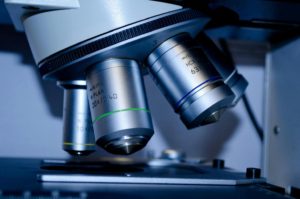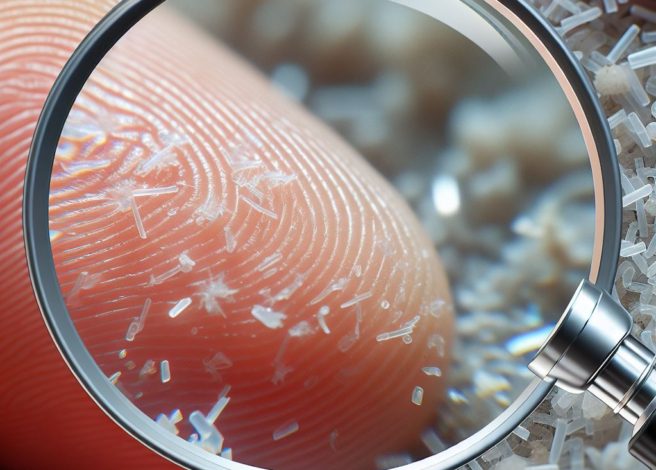Public awareness of the environmental impacts of plastic waste is growing. Among the headlines related to mounting challenges of managing and recycling plastics, you might have seen some reports about microplastics and their presence in the human body. We know that pollution in all forms is a net negative. But in a world full of risks, how do we assess those associated with microplastics?
This week, we had the privilege of interviewing Conor Carlin, Founder and President of Clefs Advisory LLC. Working at the intersection of packaging and sustainability, Conor previously held the position of President of the Society of Plastics Engineers (2024) and served as the former General Manager for ILLIG in North America. His specialized knowledge encompasses materials, packaging technologies, policy, commercial strategy, and market intelligence.
So, is your plastic packaging a potential source of microplastics? Let’s investigate!
What Are Microplastics and How Do They Affect Your Business?
 Microplastics are tiny plastic pieces smaller than five millimeters. To put it simply, they’re slightly slimmer than a grain of rice. They often come from larger plastic items breaking down. New research and studies suggest that their presence can raise key questions about how they affect consumer health and businesses, yet microplastics can originate from several different sources.
Microplastics are tiny plastic pieces smaller than five millimeters. To put it simply, they’re slightly slimmer than a grain of rice. They often come from larger plastic items breaking down. New research and studies suggest that their presence can raise key questions about how they affect consumer health and businesses, yet microplastics can originate from several different sources.
The reputation of your food business hinges on consumer trust. If they think your products might contain microplastics, it could hurt your brand badly. Think of a “Yelp review disaster” combined with a “social media storm.” As people learn more about microplastics, tougher rules may follow. This could mean fines, lawsuits, and closer looks from health officials. They might examine your packaging like detectives at a crime scene. However, some scientists remain cautious when making sweeping claims about microplastics, citing unclear results from multiple studies that are not representative of real-world conditions.
Before you worry, let’s clear something up: high-quality food packaging won’t shed microplastics into your food on its own.
The Truth About Microplastics and Packaging
High-quality food-grade plastic packaging — particularly PET (polyethylene terephthalate) — has excellent properties to protect against water and oxygen transmission, ensuring food stays fresh. With that being said, microplastics typically enter food through entirely different pathways:
- Environmental contamination: Microplastics in the air and water can land on food during production or be consumed by seafood we later eat.
- Processing equipment: Over time, plastic components in processing equipment can abrade through friction and general use.
- Mechanical abrasion: This is the key factor most people miss. Packaging can contribute to microplastic contamination in several ways. It occurs when containers are opened and closed often, when utensils scrape plastic surfaces, or when plastic is exposed to high levels of heat.
For example, taking the cap off a water bottle and putting it back on can cause friction. This friction can create tiny plastic particles. Similarly, using sharp utensils that scratch plastic containers can release tiny fragments. These particles caused by abrasion are often smaller than microplastics. This is where nanoplastics enter the discussion.
Nanoplastics: The Emerging Concern
 Nanoplastics, which are smaller than 1 micrometer (as tiny as a dust particle) are a new focus in research. While microplastics get a lot of attention, nanoplastics are just starting to be studied. If microplastics are the stars of the tiny contamination horror story, then nanoplastics are their evil little siblings. They haven’t made it to the tabloids yet — but trust us, they will. These tiny particles are so small that an electron microscope is needed to see them and wave “Hello.” They can also slip through cell membranes more easily than larger particles.
Nanoplastics, which are smaller than 1 micrometer (as tiny as a dust particle) are a new focus in research. While microplastics get a lot of attention, nanoplastics are just starting to be studied. If microplastics are the stars of the tiny contamination horror story, then nanoplastics are their evil little siblings. They haven’t made it to the tabloids yet — but trust us, they will. These tiny particles are so small that an electron microscope is needed to see them and wave “Hello.” They can also slip through cell membranes more easily than larger particles.
The scientific community remains divided about the health implications of nanoplastics, with researchers still debating whether they’re the next big health concern or just the latest scientific fascination — like quantum physics for plastic enthusiasts (we’re out there!). Significantly more research is needed to understand their behavior and impact. We know that nanoplastics, similar to microplastics, don’t simply enter food contents from well-made food packaging. Instead, they usually come from degradation, abrasion, or exposure to the environment.
Protecting Your Products and Business
As a food business professional, you can take simple steps to reduce nanoplastic (and if pieces are large enough, microplastic) contamination. This will help protect your customers and your reputation:
- Educate employees: Show them how to handle plastic containers correctly. Avoid using sharp utensils or exposing them to excessive heat to prevent damage.
- Stay informed: The Food and Drug Law Institute (FDLI) and the Institute of Food Technologists (IFT) offer resources on new food safety standards.
Understanding the Real Risks
 The science around microplastics is still evolving. Their presence in our environment is worrying, but researchers are still studying the health effects. Scientists say, “The dose makes the poison.” This means that just the mere presence of a substance doesn’t necessarily cause harm. It only becomes dangerous if it goes over a certain amount.
The science around microplastics is still evolving. Their presence in our environment is worrying, but researchers are still studying the health effects. Scientists say, “The dose makes the poison.” This means that just the mere presence of a substance doesn’t necessarily cause harm. It only becomes dangerous if it goes over a certain amount.
This doesn’t mean we should ignore the issue. Rather, it highlights the importance of using balanced, science-based methods to manage the potential risks of both microplastics and other contaminants in our food. There is no current evidence that microplastics directly pose health risks but there has been recently documented evidence of microplastics being present in parts of the human body. It goes without saying that this fact this quite alarming.
Taking Action for a Safer Future
The challenge of microplastics isn’t disappearing anytime soon. Food industry professionals can truly make an impact. They don’t need superhero capes, but they would be a fabulous addition to their outfits. Use careful handling of containers to keep your customers and business safe from damage that could generate tiny plastic particles. Train your staff well and stay updated on safety measures.
While the research into microplastics and nanoplastics continues, it’s important to note that the majority of these particles do not come from food packaging. According to First Sentier MUFG Sustainable Investment Institute, they come from sources such as tires, paints, synthetic clothing fibers, and household items.
Every small step matters. Handling containers properly helps ensure safety. These efforts build consumer trust in your brand. Your customers depend on you to stay aware and informed, even if they don’t send you cards that say, “Thanks for keeping microplastics out of my sandwich.” Separate fact from fiction about microplastics. This way, you can prioritize food safety and avoid misunderstandings.
Are you interested in learning more about plastic packaging safety? Visit our Learning Center today and explore new articles posted every week! Have any questions? Feel free to reach out to us directly.
Would you like to know more about Conor Carlin and his work at Clefs Advisory LLC? Connect with him on LinkedIn today.


